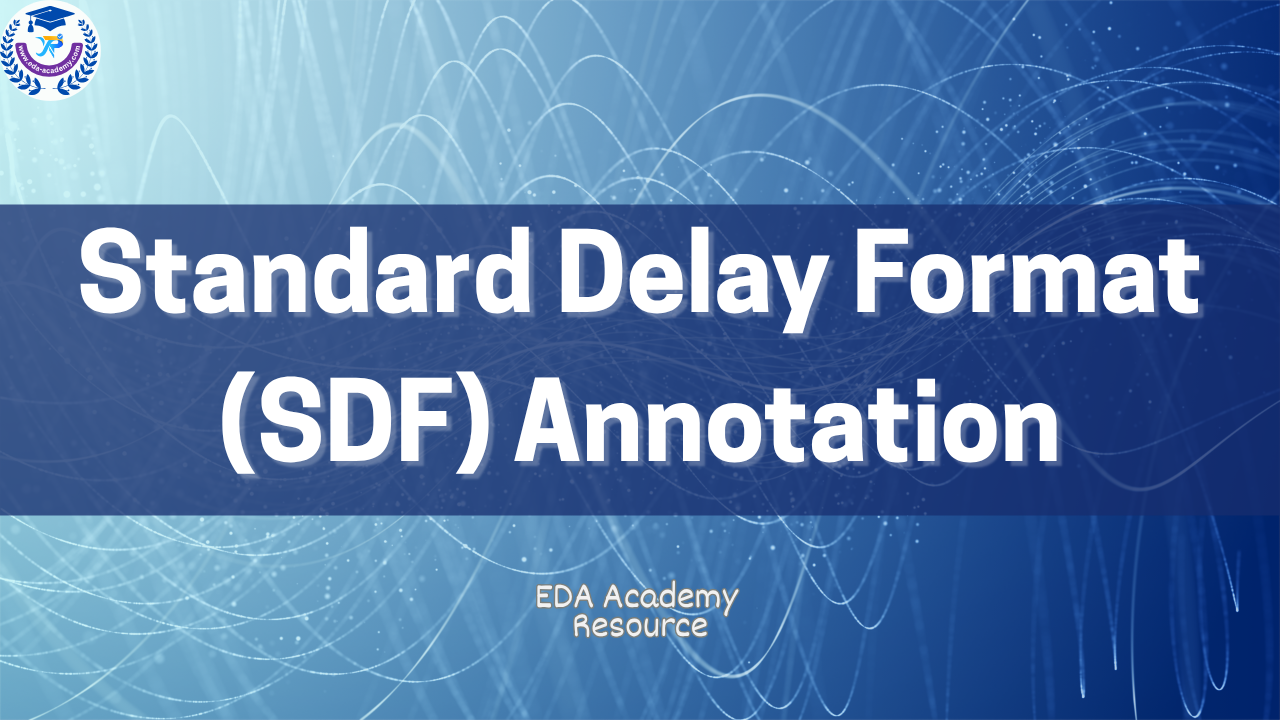Resource:
Standard Delay Format (SDF) Annotation (English)
Standard Delay Format (SDF) annotation enables accurate timing-aware simulation by applying post-layout delays to Verilog and VHDL models. This involves parsing the hierarchical structure of SDF files, identifying key elements such as IOPATH, INTERCONNECT, and timing check keywords, and using the $sdf_annotate system task for efficient integration with HDL simulators. Emphasis is placed on understanding delay calculation methods, resolving annotation mismatches, interpreting tool-specific behavior, and adapting to language-specific modeling constraints. Proper application of SDF annotation ensures precise timing validation and supports design closure in complex digital systems.
Purchase
Our course syllabus is regularly updated to reflect the latest advancements and best practices in the field. For individually purchased courses or resources with lifetime access, students can always access the content and receive updates for free. For members, all member-free courses and resources — including future updates — are accessible during the active subscription period. This ensures that both lifetime purchasers and active members can benefit from the most relevant and up-to-date content.
Created by EDA Academy
English
Last updated June 2025

Resource: Standard Delay Format (SDF) Annotation (English)
OR
USD $99.9
-80%Today
$19.9
One-time Purchase
& Lifetime Access
What you will get:
1.2 Hours of Immersive, High-Quality Video Lessons
Professionally produced and delivered by our expert team, covering core concepts and practical demonstrations, with step-by-step explanations and real-life examples to help you efficiently absorb knowledge and apply it immediately in a short time.
Certificate of completion
Upon successful completion of the course, you will receive an official certificate issued by EDA Academy, adding value to your resume and career development.
Access on mobile and computer
The course can be viewed anytime on mobile phones, tablets, and computers, allowing you to learn easily whether at the office, at home, or on the go.
Ongoing support from EDA Academy
After the course ends, you will continue to receive ongoing support from our team to help you consolidate knowledge and solve practical problems.
Further learning plan
Provides you with follow-up learning paths and recommended resources, enabling you to continue improving your skills and expanding your career development based on what you have learned.
Resource Catalogue
Description
SDF annotation provides a standardized way to back-annotate timing information into HDL simulations, enabling verification of real-world performance after synthesis and layout. The SDF 4.0 specification, defined by IEEE 1497-2001, supports both VHDL and Verilog environments and captures detailed path delays, interconnect delays, and timing checks for each design element. Simulation accuracy is enhanced by mapping the delay data directly into the simulation model using well-defined syntax and hierarchical references. This approach ensures that critical timing behaviors such as setup, hold, recovery, and removal are properly reflected in the simulation, reducing the risk of late-stage functional-timing mismatches.
Understanding the internal structure of an SDF file is essential to successful annotation. The file is organized into sections that describe the delay model, hierarchical instance paths, and keyword-based timing attributes. The header includes global metadata, such as the design name, timescale, and SDF version. Timing data is defined using keywords like IOPATH, INTERCONNECT, and TIMINGCHECK, which associate specific delays with cell paths, nets, and timing conditions. Delay values can be expressed as min:typ:max triplets to reflect variations across process corners. Labeling and keyword usage must be consistent with the syntax and semantics of the target simulator.
The $sdf_annotate task is used to inject SDF data into Verilog simulations, aligning annotated values with instance hierarchies defined in the RTL or gate-level netlist. Users must configure the instance mapping correctly and select appropriate annotation modes, such as absolute or relative pathing. Options exist for controlling error behavior, selecting delay sets, and specifying how the simulator handles undefined or missing entries. When used with VITAL-compliant VHDL models, SDF annotation integrates timing into the simulation using generics and protected configurations, enabling cycle-accurate simulations that match physical implementation.
Annotation challenges are common in mixed-language and multi-vendor environments. Differences in naming conventions, instance flattening, or timing model interpretation can lead to discrepancies between the SDF file and the simulation model. Tool-specific behaviors further complicate annotation, particularly when conditional delays, user-defined primitives, or encrypted models are involved. Diagnostic tools and simulation logs must be carefully reviewed to resolve issues such as unmapped paths, zero-delay propagation, or incorrectly applied timing checks. Customizing SDF files for debugging may involve editing or overriding specific entries to isolate problematic delays or refine annotation coverage.
Reliable timing validation depends on the effective integration of SDF annotation within the overall verification methodology. Annotated simulations must be correlated with synthesis and layout outputs to confirm that timing closure is consistent across tools. Design constraints must match annotated models to avoid skewed analysis results. Annotation also supports what-if analyses, enabling engineers to explore performance trade-offs or investigate edge-case timing scenarios. By leveraging the full capabilities of SDF annotation, verification teams can enhance the realism of simulation, validate post-route behavior, and ensure that the final design performs reliably in silicon.
We HATE spam. Your email address is 100% secure
The document will be emailed to you. Please check your Spam folder if it doesn’t appear in your inbox.
We HATE spam. Your email address is 100% secure
